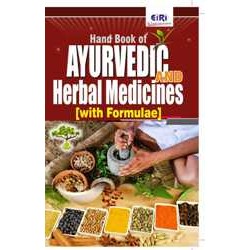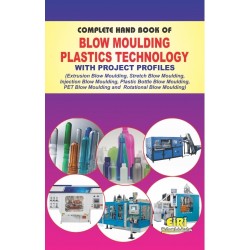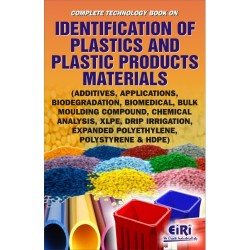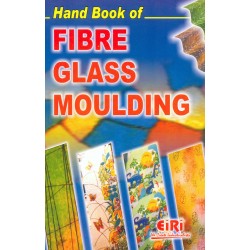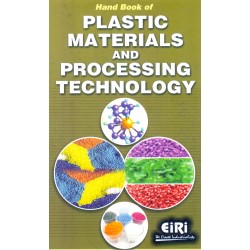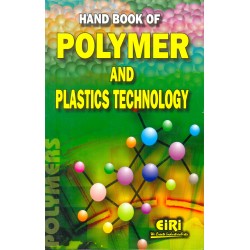HANDBOOK ON TECHNOLOGY OF FIBRES WITH MANUFACTURING PROCESSES AND PROPERTIES WITH PROJECT PROFILES (CHEMICALLY RESISTANT FIBRES, ARAMID FIBRES, HM-HT FIBRES, POLYETHYLENE , FIBRE, ACRYLIC FIBRES & RECYCLING OF POLYMERS)
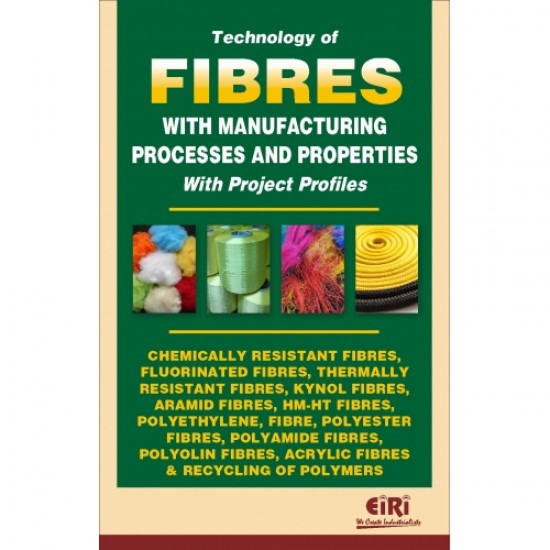
- More than 45 years of experience
- Managed by expert industrial consultants
- ISO 9001-2015 Certified
- Registered under MSME, UAM No: DL01E0012000
- 24/5 Research Support
Get your quesries resolved from an industry expert. Ask your queries before report or book purchase. - Custom Research Service
Speak to the our consultant to design an exclusive study to serve your research needs. - Quality Assurance
All reports are prepared by highly qualified consultants & verified by a panel of experts. - Information Security
Your personal & confidential information is safe & secure.
The book Technology Of Fibres With Mlanufacturing Processes And Properties With Project Profriles (Chemically Resistant Fibres, Fluorinated Fibres, Thermally Resistant Fibres, Kynol Fibres, Aramid Fibres, Hm-Ht Fibres, Polyethylene , Fibre, Polyester Fibres, Polyamide Fibres, Polyolin Fibres, Acrylic Fibres & Recycling Of Polymers) Chemically Resistant Fibres, Properties and Applications of Fibre, Thermally Resistant Fibres, Aromatic polyamides and Polyarimids (ARH),Semi-carbon Fibres: Oxidised Acrylics (NS), Synthesis and Fibre Manufacture, Aramid Fibres, High Modulus high Tenacity (HM-HT) Fibres, PBO and related Polymers (RTY and CLS), Monomer Selection and Syntheses, Fibre production, Modified Fibres, Polyester Fibre Manufacturing Process, Speciality Fibres in Polyester, Polyamide Fibers, Polyolefin Fibers and Vinyl Fibers, Acrylic Fibers, Recycling of Polymers, Recycling of Poly (Ethylene Terephthalate), Recycling of Polyurethanes, Recycling of Poly (Vinyl Chloride), Recycling of Cured Epoxies, Recycling of Mixed Plastics Waste, Recycling of Ground Rubber Tires, Recycling of Car Batteries, Plastic Recycling Equipment and Machinery,PVC/PET and Commingled Plastics Sortation, Plant Economics of Fibre Cotton from Silica Sand , Plant Economics of Fibre Glass Sheets, Plant Economics of Fibre Reinforced Plastic , Plant Economics of Medium Density Fibreboard, Plant Economics of Recycled Synthetic Polyester Staple Fibre Plant, Plant Economics of Rubberised Cork Sheet.
TECHNOLOGY OF FIBRES WITH MANUFACTURING PROCESSES AND PROPERTIES WITH PROJECT PROFILES (Chemically Resistant Fibres, Fluorinated Fibres, Thermally Resistant Fibres, Kynol Fibres, Aramid Fibres, HM-HT Fibres, Polyethylene Fibre, Polyester Fibres, Polyamide Fibres, Polyolin Fibres, Acrylic Fibres & Recycling of Polymers)
PREFACE
A fibre is defined as any product capable of being woven or otherwise made into fabric. It is smallest visible unit of textile product. Afibre can be defined as a pliable hair like strand that is very small in diameter in relation to its length. Fibres are the fundamental units or the building blocks used in the making of textile yarns and fabrics.
Fibres are the fundamental units used in making of textile yarns and later on into fabric. Thus fibres are the essential components and basic units and are an essential components for making yarns. These fibres are of many types.
Most synthetic and cellulostic manufactured fibres are created by extrusion-forcing a thick, viscous liquid (about the consistency of cold honey) through the tiny holes of a device called a spinneret to form continuous filaments of semi solid polymer.
In their initial state, the fiber forming polymers are solids and therefore must be first converted into a fluid state for extrusion. This is usually achieved by melting, if the polymers are thermoplastic synthetics (i.e. they soften and melt when heated),or by dissolving them in a suitable solvent if they are non thermoplastic cellulosics. If they cannot be dissolved or melted directly, they must be chemically treated to form soluble or thermoplastic derivatives. Recent technologies have been developed for some specially fibers made of polymers that do not melt, dissolve, or form appropriate derivatives. Kynol, generally known as novoloid fiber, is characterized by its high flame and chemical resistance Novoloid fiber technology was initially developed in the United States with commercial production facilities later established in Japan. End uses for Kynol are varted and business development is focused primarily on speciality applications.
Made from an organic formula derived from three dimensional cross linked phenolic resin. Kynol exhibits unique properties that provide a distinct advantage in applications as diverse as electric arc protection, gaskets, mechanical packing and friction paper. Over the years. Kynol has also replaced asbestos in various industrial applications and is used as a precursor for carbon and activated carbon fibers materials.
Aramid fibers are a class of heat resistant and strong synthetic fibers. They are used in aerospace and military applications, for ballistic rated body armor fabric and ballistic composites, in bicycle tires, and as an asbestos substitute. the name is a portmanteau of "aromatic polyamide".
The book provides chapters on Chemically Resistant Fibres, Fluorinated Fiberes, Thermally Resistant Fibres, Kynol Fibres, Aramid Fibres, HM-HT Fibres, Polyethylene Fibre, polyester Fibres, Polyamide. Fibres, Polyolin Fibres, Acrylic Fibres & Recycling of Polymer etc.
CHEMICALLY RESISTANT FIBRES
- Chlorinated fibres PVDC (ARH)
- Typical properties of PVDC fibres
- Fluorinated fibres. PTFE, PVF, PVDC and FEP (ARH)
- Continuous filament, staple and floc forms of Teflon PTFE
- Selected fluorine containing chemically resistant polymers
- Poly(etheretherketones) PEEK (BM)
- Polyetherketones
- Resistance of Tefzel ETFE fibres to selected chemicals after 7 days exposure
- Thermal transitions of the various PEK polymers, where E signifies an ether and K a ketone segment
- PEEK fibre performance factors
- Properties of PEEK
- Fibre products
PROPERTIES AND APPLICATIONS OF FIBRE
- PEEK and other fibres exposed to elevated temperatures for 28 days in air
- PEEK and other fibres exposed for 7 days in pressurised steam
- Cycles to failure for PEEK and other fibres as threads-thread on thread abrasion at 120 C loaded at 0.05 cn/tex
- Fibre applications
- The Chemical Resistance of PEEK Fibres at Various Temperatures
- Poly(phenylene sulphide) PPS (ARH)
- Physical properties of PPS fibres
- Chemical and solvent resistance of PPS fibres
- Poly(ether imide), PEI (ARH)
- Comparison of properties of PEI with PPS and PEEK fibres
- Chemical resistance of PEI fibres
- Others (ARH)
THERMALLY RESISTANT FIBRES
- Thermosets (HE and HS)
- Melamine formaldehyde fibres Basofil (BASF) (HE)
- Chemistry of condensation reaction
- Resins and fibre manufacturing
- Properties of fibres
- Physical properties of basofil fibres
- Thermogravimetric analysis of basofil
- Diameter distribution of Basofil fibres
- Chemical resistance of Basofil fibres after 28 days exposure at room temperature
- Staple length distribution of Basofil fibres
- Cross sections of Basofil fibres
- Staple length (mm)
- Smoke toxicity of basofil fibres
- End uses
- Novoloid fibres, Kynok (HS)
- Polymer structure of Kynol novoloid fibre
- Typical properties of Kynol fibres
AROMATIC POLYAMIDES AND POLYARIMIDS (ARH)
- Aramid fibres
- Arimid fibres
- Selected examples of polyarimid fibres
- Properties of commercial polyimide and poly (amid imide) fibres
- Poly(aramid imide) fibres
SEMI CARBON FIBRES: OXIDISED ACRYLICS (NS)
- Development and manufacture
- Theory of oxidation of polyacrylonitrile
- Oxidation oven
- Schematic diagram of acrylic tow oxidation
- Acrylic low passing through an air oven at 200 C
- Typical differential scanning calorimeter curves (heating rate 20 C/min)
- The structure of polyacrylonitrite chain segments cyclising and transforming into a ladder like, oxidised chain
- The oxidation process
- properties
- Cross sectional micrographs of Courtelle fibres
- General properties of oxidised acrylic Fibres
- Applications
- Economic considerations
- Operational costs of fireblocking fabrics fitted to passenger seats in selected British Airways aircraft in 1986
- heat treated oxidised acrylics
- Polybenzimidazole, PBI (CT)
- Development and structure
- High performance fibres
SYNTHESIS AND FIBRE MANUFACTURE
- PBI polymerisation
- Fibre properties and applications
- Thermal stability of PBI fibre
- Tensile strength after immersion in inorganic acids and bases
- Thermal linear shrinkage of PBI fibre after 24 hours exposure
- Thermogravimetric analysis of PBI fibre in air and nitrogen.
- Acid vapour resistance of PBI fibre after exposure to sulphuric acid vapour 75% (w/v) concentration
- Tensile strength after immersion in organic chemicals
- Polybenzoxazoles, PBO (ARH)
- Typical physical properties of PBI fibre
- PBI fibre available products
- Final comments (ARH)
- Summary of thermal and flammability parameters
- Peak heat release (PHR) values for selected heat resistant fibres and polymers
ARAMID FIBRES
- Polymer preparation
- Basic synthesis
- The aromatic polyamide polymerisation process
- PPTA synthesised by low temperature polycondensation of p-phenylene diamine (PPD) and terephthaloyl chloride (TCI)
- The Higashi synthesis polycondensation of terephthalic acid and p-phenylene diamine.
- The Higashi triaryl phosphite reaction
- Polymer chemical structure of Technora
- Copolyamides
- Other aromatic polyamides
- Spinning
- Solution properties
- Spinning of fibres
- Schematic representation of the liquid crystalline solution
- Schematical representation of the extrusion of the liquid crystalline solution in the dry jet wet spinning process
- Crystal orientation of para aramid fibre
- Armid Types
- Aramid types
- Structure and properties
- Characteristics of aramid fibres
- Structure
- Schematic representation of the microstructure of (a) semicrystalline polymers such as nylon 6 and (b) PPTA (fibre axis vertical)
- Radial pleated structure model of PPTA fibre
- Analysis of mechanical properties
- Some useful comparisons between aromatic polyamides and copolyamides
- TMolecular requirements for improved characteristics of HM-HT aromatic fibres
- Schematic representation of a fracture model of PPTA fibre.
- A selection of observed mechanical properties
- Typical stress strain curves of (a) Kevlar fibres (b) other commercially representative industrial yarns
- Properties of commercially representative reinforcement fibres
- Applications
- Systems engineering
- Aramid market segments and key attributes
- Ballistic and life protection
- Protective clothing with a focus on fire protection
- Advanced composites
- Stress strain behaviour for unidirectional reinforced epoxy matrix composites
- Other important applications and future directions
HIGH MODULUS HIGH TENACITY (hm-ht) FIBRES
- Melt spun wholly aromatic polyester (DB)
- Thermotropic liquid crystal polymers
- Schematic of molecular chain structure of fibres
- Vectra and Vectran
- Vectran fibre chemical structure
- Fibre production
- Properties for high strength thermotropic LCP fibres
- Fibre properties
- Comparison of fibre to fibre abrasion resistance
- Tensile strength vs flexural fatigue of Vectran HS and aramids
- TLCP parallel strand rope stress relaxation
- Applications
- Commercial uses for TLCP fibres
PBO AND RELATED POLYMERS (RTY AND CLS)
- Introduction
- Chemical repeat units of related ordered polymers (a) PBT (b) ABPBO
- Manufacture of PBO fibres
- Simplified schematic of PBO polymerisation
- Structure of PBO fibres
- Properties of PBO fibres
- Wide angle X-ray diffraction pattern of a single PBO fibre, showing the high degree of molecular orientation characteristic of rigid rod polymer fibres (The fibre axis is vertical)
- Scanning electron micrograph of a damaged PBO fibre, showing the surface skin and fibrillar structure.
- Mechanical properties of a range of high performance fibres
- Applications of PBO fibres
- Conclusions
- PIPD or M5 rigid rod polymer (DJS)
- A new HM-HT fibre
MONOMER SELECTION AND SYNTHESES
- Polymerisation
- Spinning and fibre properties
- The crystal structure of M5-HT seen along the chain axis
- Applications and outlook
- Russian aromatic fibres (KEP)
- Monomers and polymers
- Provisional characterisation of M5 fibre, spun at bench scale, compared with commercial fibres
- Structural units derived from reactants investigated in Russian HM-HT fibre research
- Polymer solutions and fibre formation
- Fibre production
FIBRE PRODUCTION
- Principal scheme for fibre production based on heterocyclic polyamides and copolyamides
- Para aramid and PHA fibre structure features
- Stress strain plots for Terlon yarns
- Stress strain plots for SVM yarns
- Stress strain plots for Armos yarns
- Fibre mechanical properties
- Fibre Structure
- Mechanical properties
- Anisotropy of mechanical properties
- Thermal Properties
- Effect of ageing on mechanical properties
- Fire resistance and thermal characteristics
- Armos fibres and applications
- Properties of high modulus reinforcement and technical yarns
- Properties of highly thermally stable yarns
MODIFIED FIBRES
- Property comparison of heterocyclic polymer fibers-mother fibres and modified fibres
- Comparison of tenacity and fire resistance of various aramid and other fibres
- Conclusions
- Specific mechanical properties
- The SSE process
- Solid state extrusion high molecular weight polyethylene fibres (GW)
- Schematic view of conjugating process
- Process description
- Structural changes during SSE
- Structure of the final solid state extruded product
- Structure
- Properties
- Strength comparison of various yarns
- Tensile strength (g/d)
- Effect of temperature on thermal strength
- Effect of temperature on heat shrinkage
- Creep elongation at 20% breaking load
- UV resistance (light and water exposure test based on JIS B 7754)
- Effect of surface treatments on interiaminar shear stress (ILSS)
- Applications
- Economics
POLYESTER FIBRE MANUFACTURING PROCESS
- Polyester fibre
- Fibre manufacturing process
- Fibre Specification
- Denier
- Cut Length
- Tensile Properties
- Crimp Properties
- Spin Finish
- Dry heat Shrinkage
- Dye take up
- Fused Fibres
- Lustre
- Physical and chemical
- properties of polyester fibre
- Problems which occur during manufacture of polyester steple fibre
- Polymerisation
- Melt spinning
- Cutting
- Problems faced in polymerisation
- Properties of Polymer
- What can spinning mills do to overcome this problem
- Problems faced in melt spinning
- Control of C.V% of Denier
- Fused fibres
- Problems faced at draw line
- Spin finish
- Crimp
- Undrawn fibre
- Plasticised fibre
- Tenacity/Dye ability Problems faced in cutting/baling
- Nail Head/Tip Fusion
- Opening of fibre cluster after opening
- Over length/Multi length
SPECIALITY FIBRES IN POLYESTER
- High/low shrink fibres
- Micro denier
- Flame retardant
- Cationic dyeable
- Easy dyeable
- Low pill
- Antibacterial
- Super high tenacity
- Modified cross section
- Conducting fibre
- Low melt fibre
POLYAMIDE FIBERS
- Introduction
- Type of Polyamides
- Nylon 6 and 6.6
- Aramid fibers
- Other Polyamides
- Manufacturing of Polyamide filaments
POLYOLEFIN FIBERS AND VINYL FIBERS
- Polyolefin fibers
- Vinyl Fibers
- Vinon
- Vinal
- Vinyon vinal matrix fiber
- Saran
- Polytetrafluoroethylene
ACRYLIC FIBERS
- Acrylic
- Modacrylic
- Nytril
- Lastrile
RECYCLING OF POLYMERS
- Recycling Methods
RECYCLING OF POLY (ETHYLENE TEREPHTHALATE)
- Direct Reuse
- Combined recovery of silver and PET
- PET degradation by glycolysis, hydrolysis, and methanolysis
- Reuse after Modification
- Glycolysis
- Flow diagram of a typical system for glycolytic recycling of PET waste
- Methanolysis
- Ammonolysis
- Hydrolysis
- Depolymerization in Supercritical Fluids
- Enzymatic Depolymerization
- Main reaction of PET depolymerization in superitical methanol
- incineration
RECYCLING OF POLYURETHANES
- Reprocessing of polyurethane waste by thermopressing
- Thermopressing Process
- Kneader Process
- Recycling of polyurethane waste via partial decomposition in kneader
- Hydrolysis
- Glycolysis
- Ammonolysis
- Stoichiometry of ammonolysis reaction of a polyetherurethane
- Alcoholysis of polyurethane (PU) waste. By the action of small chain alcohols (e.g.diol), PU is decomposed yielding homogeneous, liquid and mixed polyols
- Flow scheme of a chemical recycling process based on ammonolytic cleavage and separation of polyol by supercritical ammonia.
RECYCLING OF POLY (VINYL CHLORIDE)
- Recycling of PVC film scrap
- Characterization of used PVC
- Schematic of cable design
- Compounding of cable filler cores
- In-Line PVC Scrap
- PVC floor Coverings
- PVC Roofing sheets
- Post Consumer PVC
RECYCLING OF CURED EPOXIES
- Process of extraction of epoxy resin dissolved in nitric acid and neutralization of the extract
RECYCLING OF MIXED PLASTICS WASTE
- Direct Reuse
- Schematic of Radlite technology
- Conceptual model of physical compatibilization
- Homogeneous Fractions
- Liquefaction of Mixed Plastics
- Post Consumer Polyethylene Films
- Typical route for recycling plastic bags.
RECYCLING OF GROUND RUBBER TIRES
RECYCLING OF CAR BATTERIES
- Process steps in preparation of polypropylene regrind.
PLASTIC RECYCLING EQUIPMENT AND MACHINERY
- Plastocompactor
- Debaling and initial size reduction
- Shredder
- Cutter or Guillotine
- Screw Shredder
- Granulators
- Fine Grinding
- Cleaning and Selection
- Dry Separation
- Schematic of air stream separator
- Wet Separation
- Schematic of air stream (cascade) separator
- Schematic of vibrating air separator
- Other Methods
- Resin Detectors Type and Configuration
- Automatic Sortation
- Typical separation and sorting setups using three main detector systems
PVC/PET AND COMMINGLED PLASTICS SORTATION
- Recycle installations
PLANT ECONOMICS OF FIBRE COTTON FROM SILICA SAND
- Plant & Machinery
- Fixed Capital
- Total Working Capital/Month
- Total Capital Investment
- Turn Over/Annu
PLANT ECONOMICS OF FIBRE GLASS SHEETS
- Plant & Machinery
- Fixed Capital
- Total Working Capital/Month
- Total Capital Investment
- Turn Over/Annum
PLANT ECONOMICS OF FIBRE REINFORCED PLASTIC
- Plant & Machinery
- Fixed Capital
- Total Working Capital/Month
- Total Capital Investment
- Turn Over/Annum
PLANT ECONOMICS OF MEDIUM DENSITY FIBREBOARD
- Plant & Machinery
- Fixed Capital
- Total Working Capital/Month
- Total Capital Investment
- Turn Over/Ann
PLANT ECONOMICS OF RECYCLED SYNTHETIC POLYESTER STAPLE FIBRE PLANT
- Plant & Machinery
- Fixed Capital
- Total Working Capital/Month
- Total Capital Investment
- Turn Over/Annum
PLANT ECONOMICS OF RUBBERISED CORK SHEET
- Plant & Machinery
- Fixed Capital
- Total Working Capital/Month
- Total Capital Investment
- Turn Over/Annum
How to Make Project Report?
Detailed Project Report (DPR) includes Present Market Position and Expected Future Demand, Technology, Manufacturing Process, Investment Opportunity, Plant Economics and Project Financials. comprehensive analysis from industry covering detailed reporting and evaluates the position of the industry by providing insights to the SWOT analysis of the industry.
Each report include Plant Capacity, requirement of Land & Building, Plant & Machinery, Flow Sheet Diagram, Raw Materials detail with suppliers list, Total Capital Investment along with detailed calculation on Rate of Return, Break-Even Analysis and Profitability Analysis. The report also provides a birds eye view of the global industry with details on projected market size and then progresses to evaluate the industry in detail.
We can prepare detailed project report on any industry as per your requirement.
We can also modify the project capacity and project cost as per your requirement. If you are planning to start a business, contact us today.
Detailed Project Report (DPR) gives you access to decisive data such as:
- Market growth drivers
- Factors limiting market growth
- Current market trends
- Market structure
- Key highlights
Overview of key market forces propelling and restraining market growth:
- Up-to-date analyses of market trends and technological improvements
- Pin-point analyses of market competition dynamics to offer you a competitive edge major competitors
- An array of graphics, BEP analysis of major industry segments
- Detailed analyses of industry trends
- A well-defined technological growth with an impact-analysis
- A clear understanding of the competitive landscape and key product segments
Need Customized Project Report?
- Ask for FREE project related details with our consultant/industry expert.
- Share your specific research requirements for customized project report.
- Request for due diligence and consumer centric studies.
- Still haven't found what you're looking for? Speak to our Custom Research Team
About Engineers India Research Institute:
Note: We can also prepare project report on any subject based on your requirement and country. If you need, we can modify the project capacity and project cost based on your requirement.
Our Clients

Our Approach
- Our research reports comprehensively cover Indian markets (can be modified as per your country), present investigation, standpoint and gauge for a time of five years*.
- The market conjectures are produced on the premise of optional research and are cross-accepted through associations with the business players
- We use dependable wellsprings of data and databases. What's more, data from such sources is handled by us and incorporated into the report
Why buy EIRI reports?
- Our project reports include detailed analysis that help to get industry Present Market Position and Expected Future Demand.
- Offer real analysis driving variables for the business and most recent business sector patterns in the business
- This report comprehends the present status of the business by clarifying a complete SWOT examination and investigation of the interest supply circumstance
- Report gives investigation and top to bottom money related correlation of real players/competitors
- The report gives gauges of key parameters which foresees the business execution






















